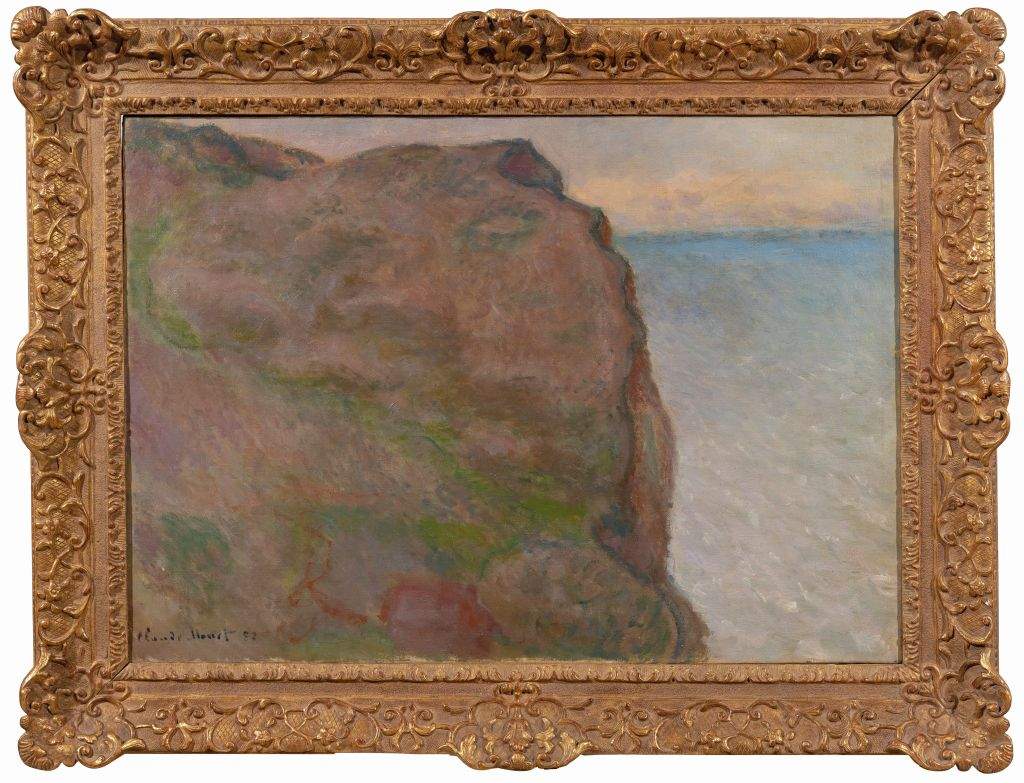The Complesso Monumentale della Pilotta in Parma is hosting, from June 15 to August 28, 2019, the exhibition Un Monet alla Pilotta. La Falaise du Petit Ailly à Varegenville and the Origins of Abstractionism, which displays one of the most famous falaises painted by Claude Monet (Paris, 1840 - Giverny, 1926) between 1882 and 1897. The canvas has been presented in Italy only once, in 2016, and will be accompanied by a number of critical texts that will illustrate the work of the father of Impressionism, and that will emphasize the expressive characteristics that progressively move away from the immediacy of impressionisticrendering and approach abstract painting.
La Falaise du Petit Ailly à Varegenville is a work that comes from an important private art collection and is currently on judicial deposit at the Complesso della Pilotta. And the exhibition project that brings it before the public is intended not only to be a moment of scientific insight, but also an opportunity to raise awareness about its possible dispersion in the art market.
The French master’s precious painting depicts the stretch of the northern coast of France on the English Channel that runs to Varengeville, characterized by a long beach surrounded by high cliffs. Attracted by the great suggestiveness of the cliffs and deep gorges that run all the way to the bridge over the Petit-Ailly River in Varengeville, Monet had stayed in the area a first time in February-May 1882, making some studies in which he experimented with the rock-sky-sea relationship from different views. More than a decade later, in February 1896, Monet returned to the Normandy coast in a period of melancholy, linked to the memory of recently deceased friends, as if on a pilgrimage to the places where he had already happily worked. The sea and the cliffs beaten by the cold wind and rain still arouse Monet’s enthusiasm for the beauty of the spectacle and offer the painter an opportunity to make a new cycle of paintings, like variations on the same subject. This is the stage of building a kind of series focused on a small number of visual angles. Although La Falaise du Petit Ailly à Varengeville bears the signature and date 1882, for the scholar Daniel Wildenstein, who wrote about it some 20 years ago, the painting was executed between 1896 and 1897, during his second stay, since, in terms of viewpoint and style, it appears far from the location of the more naturalistic 1882 cliffs, while it fits perfectly within the 1896-97 production. For Wildenstein, in fact, at other exhibitions at the Durand-Ruel gallery in May 1920, Monet had signed and dated incorrectly some of the works to be exhibited, including this one, based on memory.
It was at this exhibition that the painting was purchased by Paul Durand-Ruel, a collector and supporter of Impressionist painting. Subsequently, La Falaise passed through several private collections, until it arrived today at the Complesso Monumentale della Pilotta, waiting to find a permanent location (hopefully in an Italian public collection). La Falaise du Petit Ailly à Varengeville is a work of great interest because of the wealth of artistic and cultural references it contains, representative of a moment in which European art was measuring itself against the unprecedented compositional research of Far Eastern art and experimenting with paths from which the historical avant-gardes would emerge a few decades later. Sunrise, investigated from life, illuminates the rocks with pink, which become vaporous theatrical backdrops, creating asymmetrical cuts with the sea. Water, with its colors, constitutes the reflective medium par excellence on which the artist can focus his studies of atmospheric fusion.
The painting is also an example of the centrality of the ’series’ in Monet’s artistic production of the 1890s, when the optical instantaneousness of Impressionism was being implemented in the direction of a progressive rarefaction of figurativeness, anticipating, thanks to a veritable electrocution Kandinsky had in Moscow in 1891,abstract art.
The exhibition is included in the price of the ticket to visit the Complesso della Pilotta: full 10 euros, reduced groups 8 euros, reduced 18-25 years old 2 euros, free for under 18 and MiBAC concessions. You can also buy a cumulative ticket to visit the Pilotta Museums and the exhibition <a href=“/flash-news/3788n_<a href=”https://www.finestresullarte.info/opere-e-artisti/la-scapigliata-di-leonardo-da-vinci-galleria-nazionale-parma“>Scapigliata</a>-leonardo-da-vinci-mostra-galleria-nazionale-parma.php” target=“_blank”>The fortunes of Leonardo da Vinci’s “La Scapiliata”.
Image: Claude Monet, Falaise du Petit Ailly à Varegenville (1896-97; oil on canvas, 65 x 92 cm)
 |
| An important painting by Claude Monet (which is looking for a new owner) is on display at Parma's Pilotta |
Warning: the translation into English of the original Italian article was created using automatic tools. We undertake to review all articles, but we do not guarantee the total absence of inaccuracies in the translation due to the program. You can find the original by clicking on the ITA button. If you find any mistake,please contact us.